It’s really not hard, you just have to understand one little-known concept that nobody likes to talk about
I never like to sound too extreme, but if you’re an aspiring entrepreneur who’s looking to make an extra:
- $1K
- $2K
- Or maybe even $8K…
Every month, then this article will give you everything you need to reach that point. Again, not saying that from a place of “hype” either, saying that because I’ve seen it happen plenty of times.
To give you a recent example of this, it actually happened to a “friend” of mine named Martin.
Not going to get into all the details on his story now, as I don’t want to bore you to death, but let’s just say a few months ago this guy wasn’t doing too hot. At the time I had no idea who he was, but after telling some friends how I needed temporary help for a garden project, his name came up.
Apparently he’d told them how he needed side income, and knowing he was looking for this opportunity, they figured he’d be the perfect fit. Got his number after that, called him up, 48 hours later we started our new project. Like most small talk, we began asking about family and all that, then once that was done he began asking me about what I did for a living.
At first, I tried to keep it simple. Always use this response as people still think online businesses are a “pipe dream”, but Martin was a little different. After giving him my “I do things on the computer” response, he asked if it had to do with an online business?
From there, I told him it did, and his eyes lit up after that. Really didn’t know why at first, but once his excitement wore off, I could tell he just wanted to pick my brain. Can’t even remember everything he said now, but over the next 10 minutes he began telling me how he’d tried a bunch of things over the last 2 years, where he:
- Started an affiliate marketing website
- Started an ecommerce company
- Started a website design business
- Etc…
Everything you can think of, and after that, he said one thing that caught me off guard:
“But unfortunately I was too late, those don’t work anymore”
And I can assure you, that’s not the case. In retrospect, I think he was just “baiting” me with this statement, but it definitely worked. From there, I started asking him a lot of different questions, trying to see where he’d gone wrong.
Mainly did this with his e-commerce business, as that’s my cup of tea, so after understanding his:
- Pricing strategy
- Marketing approach
- Sourcing approach
- Etc…
I quickly realized what his problem was:
He just didn’t have a USP
If you’re not familiar with this acronym, it stands for unique selling proposition, which is a fancy way of saying “why customers should buy from you over everybody else”. Don’t let that scare you either, it’s not hard, and it should NEVER be because of price. Contrary to popular belief, if price is your USP, there’s a good chance you’ll fail. Just too much work for too little reward.
Anyway, I’ll show you how to find a great USP here next, but I always like to show you the example of Wal-Mart vs. Target first. This seems to help everybody understand USPs better, so let’s run through this quick:
Case study: Walmart vs. Target
As you’re aware, these two companies are the two “discount retail” giants. By discount retailer, I mean large companies who buy plenty of products (to fill all their stores) and because of that, they have a lot of buying power. With that buying power they’re able to get cheaper rates, and in turn, pass it onto customers.
With that said, not going to do a huge history lesson here, but the funny thing about these two companies is that Target was actually created 60 years before Walmart. Most people don’t know that because when they think of large discount retailers, they think of Walmart, and rightfully so.
Few reasons for this, but if anything, Walmart quickly grew their brand awareness within a few short years after starting their business. Target on the other hand, decided to remain regional, giving up a huge market share because of it.
Needless to say, after seeing how Wal-Mart had taken over the discount retailer field, Target was left with two options:
- Stay still, trying to dominate the midwest market or
- Figure out a way to compete with Wal-Mart on a national scale
Of course, they took option 2, mainly because they knew Wal-Mart would eat them alive if they didn’t grow. The only problem with this approach though, was that they really couldn’t use the same method Wal-Mart did. In other words, if they said:
“Hey, we’ve got the lowest prices”
Then they would’ve failed terribly as people already went to Wal-Mart for lowest prices, and since Target wouldn’t be giving them a good reason to switch, then they’d never get enough customers. After realizing this, executives went back to the drawing board and understood they had to do one thing, find Wal-Mart’s biggest weakness.
Few reasons for this, but if anything, you can’t please everybody. People are way too different to make this happen, and even though you can build a product that pleases the masses, that’s still only going to attract 50 – 60% of your overall market (reason why presidential elections are usually a 51%/49% split).
From there, Target decided to conduct a survey. Sure, they had assumptions on what Wal-Mart’s biggest weakness might be, but you never want to build something unless you have market validation. A lot of times it’s different that you initially expect, reason why it’s so important to find a problem before building a solution. After that, I’m really not sure on what problems they found, but I do know the problem that stuck out to them:
A certain segment of the market wanted a better shopping experience.
In other words, they loved Wal-Mart’s prices, but they hated going there. It was always hectic, dirty, and just not a place they wanted to be. After looking into the demographic that was saying this, they learned their next important lesson:
This market had a little more money in their pocket.
Bingo, this is exactly what every business should strive for. A problem that people have, and a market that has the money to pay for this problem. After that, Target started rebranding their stores as the “cleaner” alternative to Wal-Mart, and the only downside was how they’re a little more expensive. To the people they didn’t want, this was a detractant. Meaning if they were the white trash that people hated about Wal-Mart, they wouldn’t shop at Target, as this market valued cheap pricing over everything else.
On the other hand, for the market Target wanted, this was perfect. They’d gladly pay more money for a better shopping experience, and that’s Target’s unique selling proposition. They don’t try to be the cheapest, but they try to provide a clean shopping experience while still offering great prices, the perfect USP for their overall market.
Get what I’m saying?
If not, don’t worry about it yet, it’ll all make a lot more sense once we get done with this. Just wanted to give you this example now as it’ll help you tie everything together later on, but now back to Martin.
Long story short, after telling him about USPs, I could see he immediately knew what I was saying. He really wasn’t giving customers a reason to shop with him, as they could’ve went to Bestbuy.com and bought the same product for the same price. From there, if two businesses are offering the same thing, customers are always going to go with the trusted brand. This relates back to what I mentioned a second ago with Wal-Mart and Target. If Target would’ve said “Hey we have the cheapest price”, then nobody would’ve went there, as Wal-Mart was “their guy” for cheapest prices.
Anyway, after seeing what I was saying, I decided to help him out after that. Really never saw myself as a coach, but after taking him through the entire process, I was able to help him start putting up 5-figure months within the next 180 days:
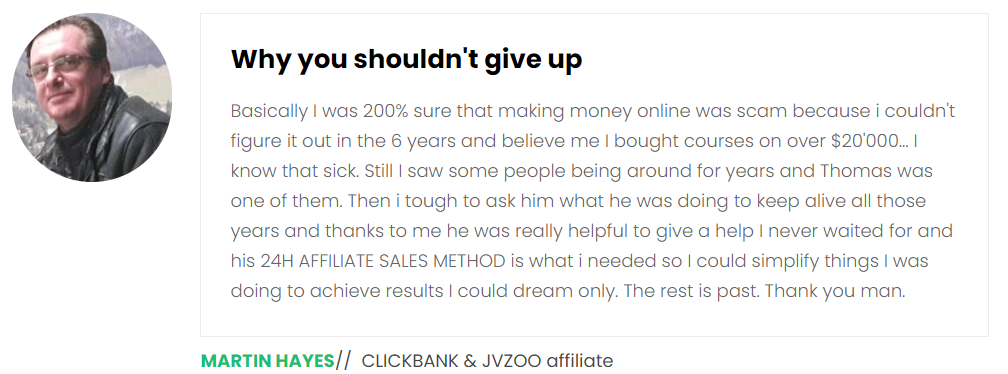
This was cool, so after that, I decided to see if I could repeat the process. At the time my mom was travelling the world, and even though I knew her technological deficiencies would make this interesting, we were still able to get great results for her as well:
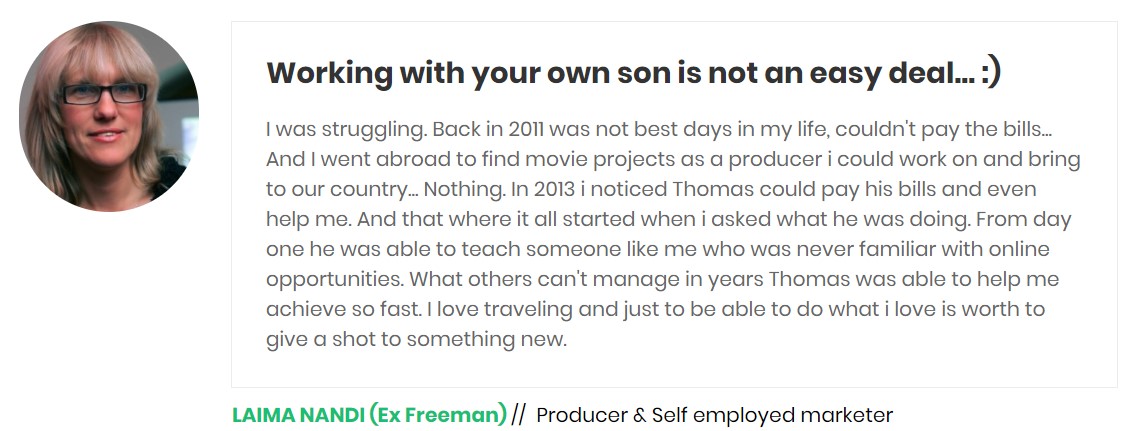
And I’ll be honest, this is the main reason why I wrote this article for you today. I’m really just sick of seeing all the terrible advice out there. Whether it’s the Facebook Ad guru talking about how Facebook Ads are all you need to succeed (it’s not), or whether it’s the dropshipping guru talking about how dropshipping is a great business model (that USP is already taken), I can see why a lot of people are skeptical anymore.
But that doesn’t mean you still can’t reach your goals either.
As I hope you noticed in my Wal-mart vs. Target case study, there’s timeless principles that’ll always work, you just have to understand how to use them. Something that’s a little tougher to-do, but once you get the hang out of, it’s a foundation you can use for the rest of your life.
Needless to say, that’s what I’m about to show you what to do, that way you have a proven formula for success. All I ask in exchange is that you take notes and actually take action after reading through this. Consumption is one thing, action is another.
Ready to get started?
Great, let’s jump into it:
Step #1 – Finding your industry
People make a lot of mistakes when it comes to creating their online business, so I can’t really say there’s one “silver bullet”, but I will say alignment is a huge thing that holds people back. What I mean by that, is that a lot of people chase things they don’t enjoy, and can’t have sustainable success because of it.
To give you an example of what I’m saying by this, a few years ago one of my friends decided to create an e-commerce “baby store”. Reason for that was because he’d read how they had high profit margins, figured that’s what he needed to succeed.
After that, he went through the entire process. Built his product, launched ads, all that good stuff. Initial results? Amazing. I can’t remember how much money he was making right away, but I remember he was raking in the dough. At the surface, you’d think he had an instant winner on his hands, but he ended up closing this business 6 months later.
Why?
Because he couldn’t stand the thought of talking about babies anymore. In other words, money is a great initial motivator, but it doesn’t last forever. This is why you need to work in an industry you enjoy. If you don’t, you won’t last more than 6 months.
Now that we have that out of the way, when it comes to finding something you enjoy, just start by writing down the first 3 – 5 things that come to your mind. If you overthink it, you’ll mess it up. On the other hand, if you rapid fire, you’ll know exactly what to do.
Giving you an example of what I mean by that, if you were an athletic outdoorsman, I could see your initial list being something along the lines of:
- Fishing
- Soccer
- Hunting
- Baseball
- And cars
A lot of opportunity we could get from that list, something that’ll make sense in the next step. On the other hand, if you were a 52 year old female with 5 kids, I could see your list going something along the lines of:
- Ferrets
- Photography
- Ancestry
- Etc.
Also a list we could extract a lot of opportunities from. What I guess I’m trying to get at is don’t focus on business at this point, focus on things you enjoy. Once you have this down, it’s time to move onto:
Step #2 – Finding the weakness
As we mentioned earlier, the best “business plan” is to simply focus on a market that’s already validated demand, then create a product that fixes an inherent weakness. In Wal-Mart’s case, since they were the cheapest, they had a weakness of being too busy. Of course, that isn’t a big deal for their specific target market, but it’s a huge deal for people outside their market.
That’s the gist of it, but here’s the good news, it’s really easy to find these weaknesses in today’s world as well. You don’t have to do any surveys or anything, you just have to go to Amazon and read reviews. To give you a quick example of this, let’s assume one of your interests was soccer.
From there, I’d go to Amazon, type in soccer:

And after that, go to a product that’s a “best seller”. By that, I mean you can either click on something that says best seller:
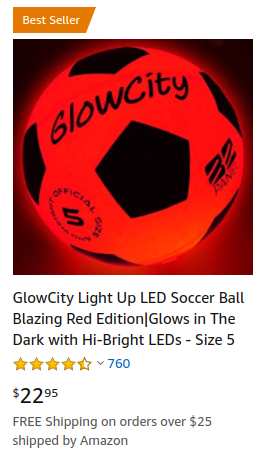
Or something that has over 500 reviews:
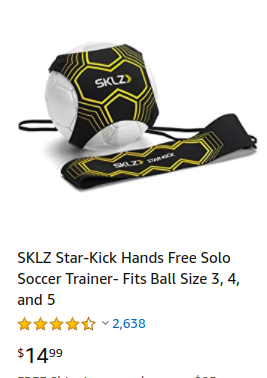
It really doesn’t matter, the main goal here is to pick something that already has a “validated demand” (that way we know it’ll sell like crazy, however in this section our main goal is to find a weakness for our competitors product).
For our current example, we’re going to use the Free Solo Trainer:
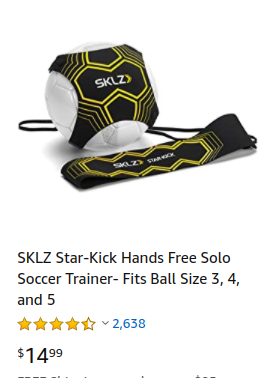
From there, we’d click on the item, then go start looking at reviews. Really not an exact “science” to this, but we really just want to see all the pros and cons of this product. Reason for that is because we want to keep the pros in place, while overcoming the cons.
Not going to go through the entire process now, as it generally takes 60-90 minutes or so, but after looking through a few of the reviews I can see people love this product:

But in the same review, we can also see the biggest downside as well:

And that downside, is how it can be dangerous for anybody who’s a little older. From there, we’d want to see if anybody else has experienced this issue, which they have:

So after noticing this, we essentially have a perfect product we could create ( Keep in mind that this still needs to be validated with additional tools! ). In other words, there’s a lot of demand, along with a hungry market. Sure, we might not get parents of 5 year-olds to come on board, but you best believe anybody 10 and up will be buying from us right away (more on that in step #4).
Now that we have our USP in place, it’s time to move onto:
Step #3 – Creating your beta product
One thing that’s surprised me over the recent years, is how “complicated” people think things are. It’s like they’re under the impression of how we’re still stuck in 1980, where we have to have secret connections before we’re able to do anything, that’s not the case in today’s world.
Guess there’s a few ways I could explain that, but in terms of building your beta product, there’s plenty of manufacturers who’d help out with this. To give you one example, Morpho manufacturing is a great start:
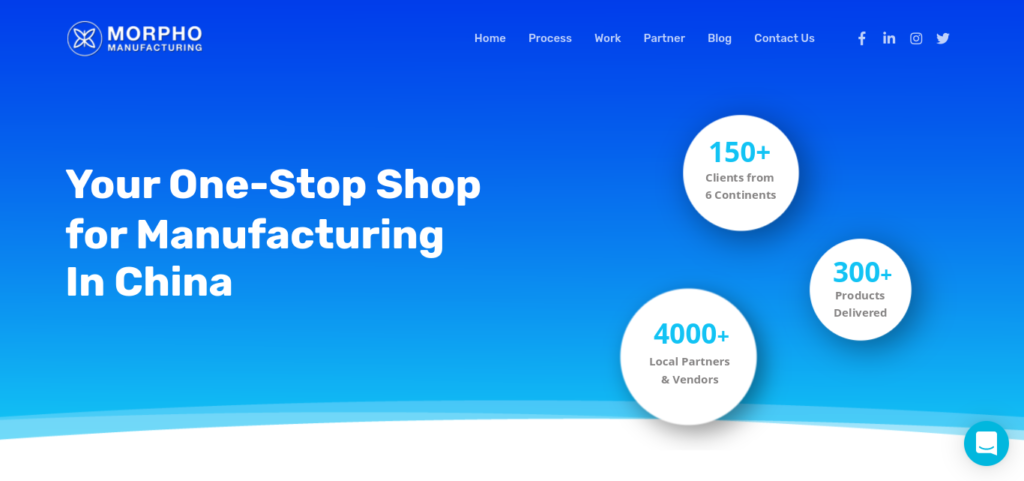
And even though there’s specific manufacturers who might work better for your industry, the main concept remains the same, it’s really not hard to build a beta product in today’s world. For our current product, what we’d want to do at this point, is reach out and let them know we’re looking for a “safety stop” feature on an existing product.
The reps for these companies are pretty good about understanding what you’re saying, so not going to get into too much detail on this process, but after that they’ll begin building your product. They’ll essentially understand you’re trying to make a better version of product A, that way people can buy a product that isn’t dangerous, and they’ll do everything they need to do in order for you to get your perfect product.
From there, you’ll receive an initial concept, if it looks good you’ll buy the “test batch”. The volume really depends on many factors here, but I will not go much in details here as it depends from too many factors, but basically you can start somewhere between 100-500 pieces. This is something you can negotiate upfront, doesn’t cost that much. After that, you’d upload your product into your store, I advise using Amazon during the initial stages. Yes, having your own store works better later on, but not right away.
Reason for that is because when you create your own store, you need at least 5 products. Anything less, people think it’s a scam. On the other hand, when you use Amazon, you just need one product to get started. Everybody trusts the Amazon brand, so they don’t care about what company is selling it.
On top of that, Amazon FBA also takes care of distribution for you, so it’s a hands off experience. Not something I advise using long-term, as there’s cheaper distributors out there who do the same thing, but they usually have higher “minimum requirements” as well.
Anyway, just something I wanted to mention quick, and the “Amazon upload” process is pretty simple. There’s a lot of current information on this, something a simple Google search can show you how to do, so not going to waste your time covering this here.
Once that’s complete, we’ll move onto:
Step #4 – Promoting your USP
Now that we officially have everything ready to go, all we need to do is promote your USP, and this is where things can get a little “advanced”. Contrary to popular belief, marketing is a little more complicated than most people think. You can’t just put up a Facebook Ad and expect it to sell something. You need to separate your target market into specific groups, then advertising to them specifically (you’ll waste money if you don’t).
Going back to our current example, in this case, you’d want to split them into two groups:
- Group #1 – People who are looking at the old product
- Group #2 – People who are looking at soccer in general
When it comes to group #1, we’d simply put up an advertisement that said something along the lines of:
“All the benefits, none of the danger”
See HOW powerful this is…?
Of course along with a picture of your product. Of course, you should probably spice up the wording a bit, but I wanted to show it this way as it helps you understand the main concept. At this point, you just want to show hot buyers your USP.
Reason for that, is because if somebody is looking at the product, they’ll know what you’re talking about. For those who’ve already purchased this product, they’ll be the ones who will buy yours right away. Something that most people don’t know about, but current buyers are the best buyers, as long as they have a reason to.
On other hand, if somebody is looking but hasn’t purchased yet, they’ll instantly click to learn more. From there, your description will need to show them why yours is important, and they’ll go read the other products after that. Once they do this, they’ll understand why yours is necessary, purchasing yours immediately afterwards.
Make sense so far?
Hope so, but to make sure we’re on the same page, let’s look at the second group now. For this group, they’re the ones who are just looking at soccer in general. With them, they’re not going to understand your USP right away, so you’d have to take a different approach.
This is something you’d have to do a little testing on, as I’ve never worked with this specific market, but on the top of my head I’d put something along the lines of:
“The perfect training advice for rising stars”
Reason for that is because we want them to click on that ad, then from there, we’d have to show our USP in the description. Few ways you can do that, but in short, they’d do some research after seeing your product. Everybody loves to compare, so after reading the other product’s review, they’d understand why yours is best. After that, there’s a good chance they’ll come back and buy from you. P.S. That the reason why we analyze reviews with SWOT analyze and be sure you do it right because this will affect you success for at least 60%
See what I’m saying? It’s really not a hard process, you just have to put in the work upfront. Once you do this, and have a stabilized product in place, you’ll move onto:
Step #5 – Rinse and repeat
If you only did this process with one product, you’d make a good amount of money, but it really doesn’t make sense to stop there either. Not only would that be putting all your eggs in one basket, but it’d severely limit your potential as well. Every market has different angles you can sell from, so once you’ve optimized your “all-in-one” training product, you could then move onto:
- Building better cleats
- Building better water bottles
- Building better nets
- Etc.
The options are endless, but as I hope you’re starting to see by now, it’s just a matter of finding demand and creating a better product. Your initial goal should be to have at least 10 sales per day organically per product BEFORE building additional product. Once you do this 4 -5 times and for each of the product you get 10 sales per day at least organically, you can then move onto building your own Shopify store (with current products), but advise staying on Amazon until then.
Alright, now that we’ve covered all this, let’s move onto:
The recap
In short, creating an e-commerce store in 2020 is still VERY possible, you just have to find the right USP. It always makes me laugh when people say their market is saturated, because that’s hardly the case. There’s usually always room for improvement, whether it be on the product itself, or for a certain segment of the market.
The hard part is just finding that room for improvement, but once you do, you’ll be set. It’s a timeless principle that’ll never change.
-Thomas
P.S. Also, if you’re interested, I do personally help people with this. Not something that’s absolutely required, as this is everything you need to know, but more of an accelerator. Interested in learning more? If so, please click here

